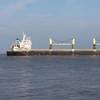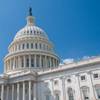Biden’s Offshore Wind Target Slipping Out of Reach as Projects Struggle
President Joe Biden’s goal to deploy 30,000 megawatts of offshore wind along U.S. coastlines this decade to fight climate change may be unattainable due to soaring costs and supply chain delays, according to forecasters and industry insiders.
The 2030 target, unveiled shortly after Biden took office, is central to Biden's broader plan to decarbonize the U.S. economy by 2050. It is also crucial to targets of Northeast states hoping wind will help them move away from fossil fuel-fired electricity.
"It doesn't mean that there can't still be excellent progress towards this technology that's going to do great things for our nation," said Kris Ohleth, director of the Special Initiative on Offshore Wind, an independent organization that provides guidance and research to the industry.
"It's just not going to be by that size by 2030. It's pretty clear at this point."
In recent months soaring materials costs, high interest rates and supply chain delays have led project developers including Orsted, Equinor, BP, Avangrid, and Shell to cancel or seek to renegotiate power contracts for the first commercial-scale U.S. wind farms with operating start dates between 2025 and 2028.
Companies say they remain committed to the projects, which have a combined capacity of more than 6,000 megawatts. Yet delays have resulted from the need to strike new contracts and secure specialized equipment in demand all over the world.
"The U.S. will not reach the 30 GW by 2030 target," Samantha Woodworth, North American wind analyst at Wood Mackenzie said in an email, citing "recent upheaval." The energy research firm expects 21 GW of offshore wind along U.S. shores in 2030, breaking 30 GW by 2032.
Developers began raising doubts this summer.
"Thirty gigawatts is now unfortunately not something that the developers are really aspiring to," Michael Brown, U.S. country manager for Ocean Winds, an offshore wind joint venture between France's ENGIE and Portugal's EDP Renovaveis, said at a Reuters Events conference in July. "We want to meet as high a gigawatt target as possible, but it's not going to be possible to meet those 30 GW."
Ocean Winds spokesperson Kelly Penot-Rousseau would not comment this week on Brown's remarks. But in the two months since he spoke, the U.S. industry has suffered a string of additional blows.
Last month, an Ocean Winds-Shell project, SouthCoast Wind, agreed to pay $60 million to cancel contracts with Massachusetts utilities.
The same week, Orsted warned it could see impairments of $2.3 billion on three U.S. projects and the industry largely failed to show up for a Biden administration sale of offshore wind leases in the Gulf of Mexico.
White House spokesperson Michael Kikukawa said the administration "is using every legally available tool to advance American offshore wind opportunities and achieve the goal of 30 GW by 2030." He noted industry investments have increased by $7.7 billion since Biden last year signed the Inflation Reduction Act, containing tax credits for clean energy.
Still, offshore wind developers including Orsted have said the IRA’s subsidies are insufficient for projects to thrive in the current environment, and are lobbying the administration for additional concessions.
STATESIDE SETBACK
Installing 30 GW of offshore wind by 2030, enough to power 10 million American homes, was an aggressive goal that sparked confidence in the market that the U.S. was serious about offshore wind after years of lagging Europe and Asia.
The nation currently has just two pilot-scale offshore wind farms capable of producing 42 megawatts of electricity.
In a U.S. Department of Energy report in 2022, just one of two independent forecasts predicted the U.S. would have at least 30 GW of offshore wind by 2030. In this year's report, published last month, 2030 forecasts by market research firms 4C Offshore and BloombergNEF were ratcheted down to 26.6 GW and 23.3 GW, respectively.
Those levels lag installation forecasts for nations like China and the United Kingdom over the next decade, according to the DOE report.
DOE spokesperson Samah Shaiq said the 2030 goal "is still within striking distance" and the speed of development would depend on regulatory efficiency, availability of vessels and port infrastructure, grid planning and new turbine technology.
The administration is working on initiatives to address those issues, Shaiq added.
Northeastern states such as Massachusetts, New Jersey and New York need wind power to meet ambitious targets. New York, for example, has a goal to power its grid with 70% renewable energy by 2030.
“The real reason that the Biden administration could set 2030 objectives for offshore wind is because of the U.S. northeastern states," said Doreen Harris, president of the New York State Energy Research and Development Authority (NYSERDA), which is implementing the state's offshore wind mandate of 9 GW by 2035.
NYSERDA warned the state's utility regulator last month that delays in deploying offshore wind could threaten that target and asked the New York State Department of Public Service to approve price increases to contracts with Equinor, BP and Orsted.
Massachusetts Department of Energy Resources Commissioner Elizabeth Mahony said she was confident in the future of offshore wind. The state has a target of procuring 5.6 GW of offshore wind contracts by 2027, with 2.8 GW in operation by 2030, according to the Executive Office of Energy and Environmental Affairs.
A spokesperson for the New Jersey Board of Public Utilities said the state was moving forward with solicitations to reach the state's goal of 11 GW of offshore wind by 2040.
Stephanie McClellan, executive director of the offshore wind advocacy group Turn Forward, said making sure the first fleet of projects succeeds was more important than a particular timeline.
"That's where the attention needs to be placed," she said. "Not what's going to happen in 2030."
(Reuters - Reporting by Nichola Groom; Editing by David Gregorio)














